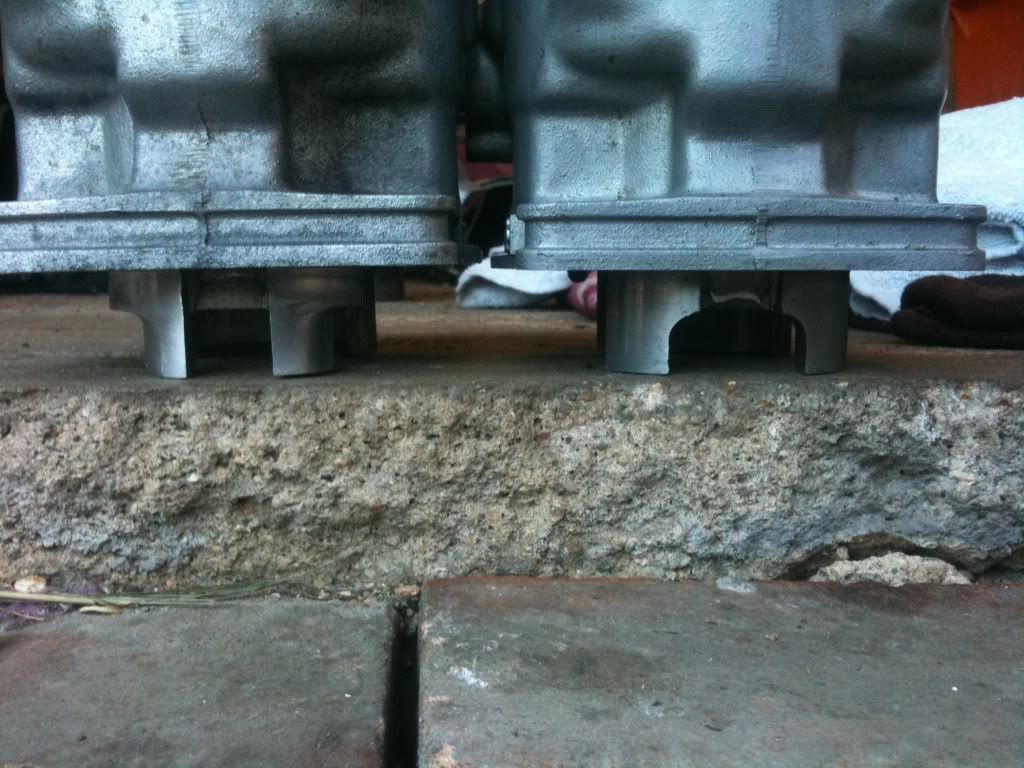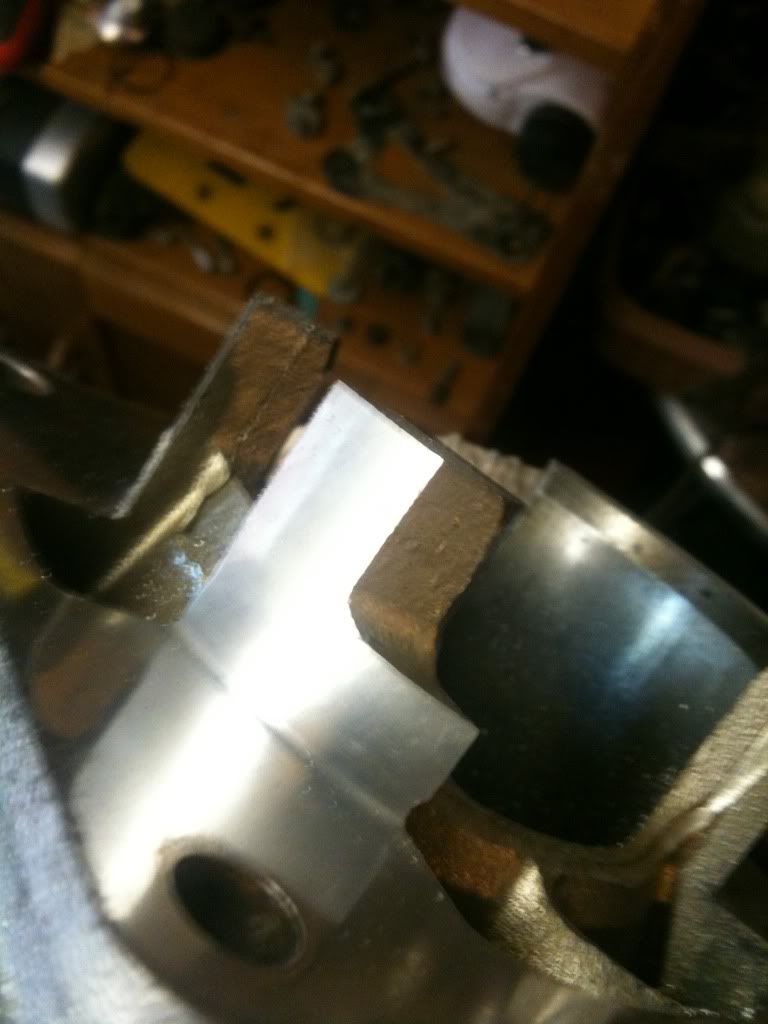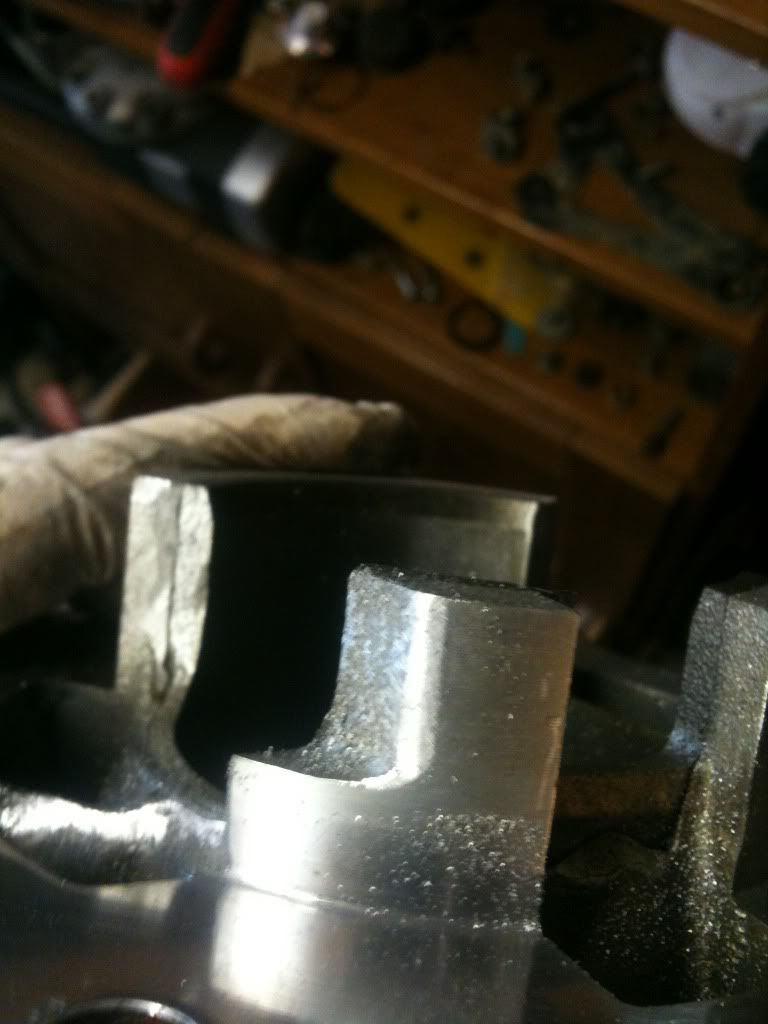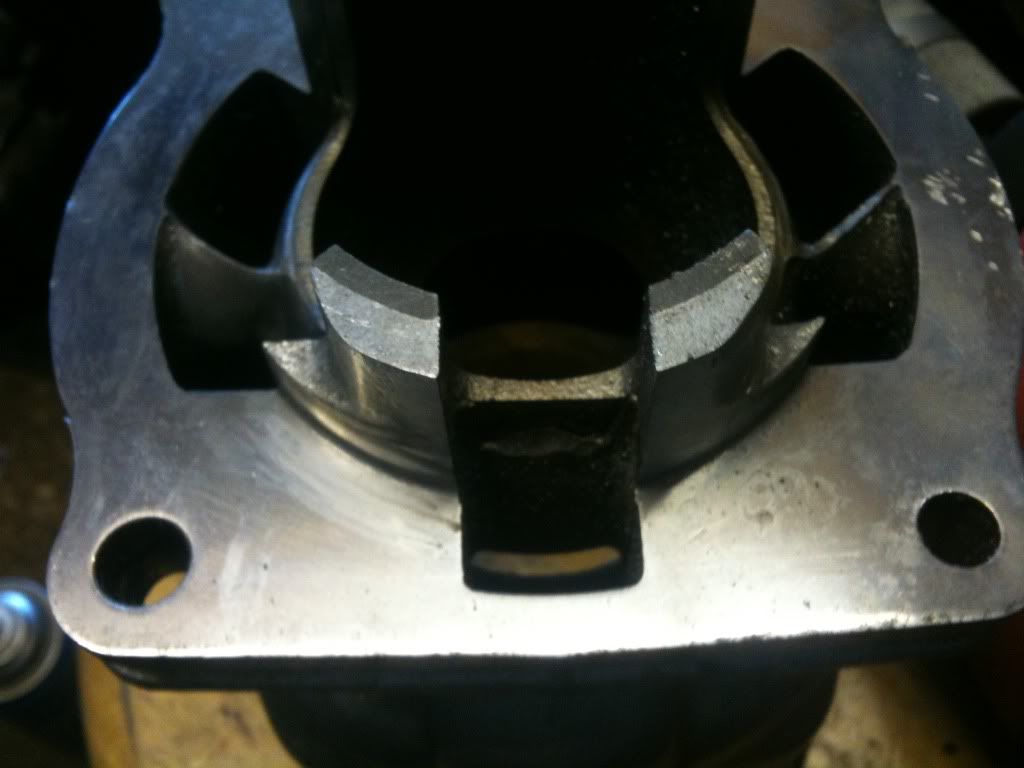Porting, Polishing & General Tinkering
-
Porting Polishing and General Tinkering
Firstly I just want to say that this is post copied directly from our old site and was originally posted by
El_Faggo, so thanks for that!Starting this thread to talk about how to improve the flow and aerodynamics of the motor internals. (Clean everyhing thoroughly before re-assembling the motor)
Carburetor
Polish it, when you look into the carburetor you will see the large opening at the rear and the small opening at the front, polish them both, allows for faster air/fuel flow = better throttle response from the carb.
Boost Bottle
Aftermarket boost bottles are available, get one that you can adjust the internal size of, for a 125cc you want a boost bottle that is about the same, roughly 125cc's.
Reed Block
Check fins and reeds for condition, tune this as to your needs, there are threads on this forum about it so I wont go into it here, also I'm sure that there are people here that have done far more with the reed block than I have and know much more about it.
Crank Case Intake
Just after the reed block if you look inside the crank case you will probably notice that the two parts of the case are not matched and do not share the same shape, this will affect mixture flow into the crankcase and cause a different pressure on either side of the intake causing the incoming mixture to be unevenly spread. To fix this problem use tippex to paint the protruding parts, you then need to take a pencil and draw lines with a ruler on the outside of the intake (where the reed block bolts on), this will give you the line that you are going to take the metal back to, now comes the tricky part, the 2 halves need to be matched, dont just go cutting out all the metal to get a flat surface all the way in at the depth of the pencil line, you should only need to cut away at 2 surfaces. The 2 surfaces that are to be taken back are the ones with the tippex on them, you need to steadily file and/or grind them down constantly checking the tippex and checking against the other half of the crank case, dont take too much off or you will end up with real problems, once done the 2 halves should match up perfectly along the lines, now you need to work on the rest of the surface to get it as flat as possible, give it a sand back until all traces of you hacking at it are removed. (again dont go too far with the file and grinder as the emery paper will take metal off as well).
Crank Case
Inside the crank cases, not much to do in here, matching can be done but is best left alone as there will not be much benefit if any from doing it and you will only weaken the casings, mould lines from the factory can be sanded back and polished out, the inside of the crank case can be polished to reduce any chances of metal fatigue, polishing will bond the molecules of the metal tighter together and remove any defects that could cause cracks, it will also improve aerodynamics due to the air moving inside the crank case moving over a polished surface rather than a rough one (I have seen on this forum that people have said not to polish inside the crankcase, this is utter rubbish, I have known a few two stroke racers and my brother was a mechanic for a team in the
Manx TT, they all do it so dont tell me otherwise disbelief). When polishing the crankcase dont polish the bearing seats, the bearings will slip.I've actually been reading some more this morning about why two strokes deteriorate in performance over time and I think I have found the answer, the crank cases of a two stroke become porous due to the conditions within the crank cases themselves, racers tend to change their crank cases every year to get around this, but and this is a good but, there is a easier (easier meaning cheaper) solution for us who cant do an engine rebuild and crankcase swap yearly, the solution is electroless nickel plating, bearing seats and the outside of the crank cases are painted with a rubber paint that can be removed later to prevent the nickel sticking there and nickel is applied in a chemical bath, but beware, preperation is the key, if not prepared properly the nickel will become loose and come off potentially destroying your bearings and top end, the nickel will seal the internals of the case and make it non porous, it will also be very easy to polish to a mirror finish meaning not only do you get one performance boost but 2.
Crank
The cranks counter balances can be lightened if cut correctly, this is a job for an engineer, I had mine reshaped and lightened by my brother, less weight in the crank = more BHP, crank can be polished to a mirror finish, this also is beneficial to the internal aerodynamics, anyone that says that the water will bead on it should think about this, could you hold onto something of the same size moving at 8,000 RPM, didnt think so, fuel will not bead on the crank, it will actually stick to it less as there are no pores or grooves left for it to settle into, as for the golf ball dimples theory, yes that is done to make it fly straight, enless you are planning on playing golf with your crankshaft at any time soon then forget all theorys that you have heard.
Connecting Rod
Can be polished and casting lined from manufacturing process can be removed, be careful doing this as you can quickly ruin a perfectly good con rod, after removing cast lines and polishing the rod should be shot peined and re polished, the rod can afterward be re plated with a protective finish but the finish will have to be machined out from the bearing seats (this all depends on thickness) if the person machining the rod doesnt know what they are doing then you will end up with a slack rod rattling on the bearings. Again less weight in the motor = more BHP.
Piston
Polish the piston crown, this will reduce carbon buildup, carbon is weight, the more carbon on the crown the more weight there is, if you are really good you can also polish the inside of the piston and remove mould lines, this will reduce the chances of a crack from fatigue.
Cylinder Head
Polish it, plenty of people do it on here, again reduces carbon buildup, compression can be increased by adding a longer spark plug, remove the spark plug on a regular basis and clean it, any carbon buildup on protruding threads of the spark plug can strip the threads out of the alloy head, tuning within the head is difficult for a novice and should be left alone, the two best ways to tune are by either skimming the head to increase compression or removing some metal from the combustion chamber in the head itself, the shape of the combustion chamber is very important though so dont go hacking at it without knowing anything about what you are doing, my advice is leave it standard.
Ports
Porting and flowing is a fine art, the powervalve is the most basic way of porting, the powervalve esentially adjusts the height of the exhaust port depending on the revolutions of the motor, only polish the power valve and the exhaust port, some work can be done inside the exhaust port but not anything that will keep your bike reliable, Intake ports should be left alone, they are at a good level now for road use, any adjustment up or down will only make the bike harder to live with, ports can be slightly widened, but ever so slightly, too much has negative effects, the intake ports can be cleaned inside with a dremel, remove metal that is left by the casting process and clean them up a bit, a nice grinding stone should be used for this but whatever you do dont change the bend or shape of the ports only the width if you really want to do it, I reccomend that no more than 1mm total is added to the width of each port, anything more and you will regret it, the bike will become harder to ride at low revs the more you open the ports up due to there not being enough pressure inside the motor, free flowing is not allways the best.
Exhaust
Everyone loves a
DEPbbbbbbbbbbbbbbbbbbbbuuuuuuuuttttttt I went down another route and bought aNikon, its bigger, what can I say, bigger pipe designed for revving the nuts off the bike, DEP pipes in my eyes are made for the road, they keep the bike nice to ride in all conditions, nothing wrong with them and I will pick one up one day, friend of mine had one and it was so much better than my stock pipe, some tawt even nicked it off his bike, Big One, not a bad pipe, pretty much a replacement pipe for a stock one but dont give the benefits of the DEP pipe, my mate put one on his bike (cheap, 2nd hand, like new) when his DEP got nicked, the only fun thing about it was that you could hear him from 3 countries away and it burned the number plate due to the intelligently designed silencer, as for my Nikon, truth is I've never tried it, bike got nicked, recovered and stripped and blah blah, never got chance to put it on, If anyone on here owns one then tell me about it.Feel free to correct me on any mistakes, add your opinions and talk about this, I want people to input their experiences with tuning and name any that they have done to their DT, talk about how what you did affected your bikes performance and how it didnt but remember most tuning is useless if you dont tune for one specific area, there is no such thing as a tuned all rounder, an all rounder was what you got when you bought the bike. Good riding everyone and good tuning.
Response
Other members went on to contribute to the discussion.
Dingle001Nice one, must have taken hours to type all that up!!
Completely agree with the words on port polishing. I also read on here last night about the theory that polishing 2 strokes is not the right thing to do. I believe it is and I'm sure all the proddy racers from the '80s would agree cos all the quick ones did it! Also, knife edging the port bridge on the transfers on the mating face with the crankcase. Gas flow is very important. So DT-Bradders - rescue those crankcases from the bin, they are good, as you first thought!!!
Agree also with polishing con rod, but dont attempt it on an assembled crank!
Not sure about machining crank webs as the crankcase free volume needs to be as small as possible to aid crsankcase compression. Machining away the crank increases the volume so some/all of the benefit may be lost. Interesting though that the later DTR's had a heavier ignition flywheel. If lightening the crank improves things then maybe better to put on the earlier ignition assembly instead?
I have never ever heard of 2 stroke crankcases becoming porous though! I dont recall racers changing/coating crankcases during my time in various paddocks around the place although I was operating at an amateur level. biggrin Id be interested to know if Rotax 2 stroke engines that are certified for microlights are coated to prevent this as an aicraft engine has very specific time between overhauls. As the crankcase is only exposed to a petrol/oil mix I'm not sure how this happens? Why isnt the cylinder or the head affected as well as it may cause leakage into the water jacket? i'm interested in more info or opinions on that one.
mr_karnageive always been told that polishing the engine side of the carb will upset the air to fuel mixture because fuel tends to 'attach' itself onto the polished surface whilst a rough finish will keep the fuel flowing, hence why you leave inlet ports with a rough finish.
just my two copper pennies
cant fault the rest of it, nice write up
El_FaggoFrom what I understand its not something that takes away a great amount of power, however its mainly around the gasket areas that it becomes porous, the coating of the inside of the crankcase makes for a better seal, like Dingle001 has said its all to do with pressure and any loss of pressure can be felt, but if the crankcase on one side of the motor is smaller/larger than on the other side then the pressure will be uneven causing an uneven distribution of the mixture throughout the intake ports, I personally think that if you can afford to do it then buy a few of the right hand side crank cases (the one without the serial number) it might be that you can find one that is a better fit to its counterpart, maybe Bradders can try some of his to tell us if there is any difference may be a shot in the dark but there migh be something there also on racing bikes the difference between a new and a old crankcase can be as much as 3 HP and as many racers are lead to believe this is because of the bearings and not the crank cases themselves
As for the crank itself, when my brother cut away at it but I can't remember exactly what he did, I think he removed material from the inside faces of the crank going to the exterior edge (largest circumference), I think that around 6oz of material was taken off in total but I may be completly wrong so dont take that for gospel, the crank was given more of an angular shape on the inside face, when I get back in a few months I will weigh everything and post some numbers and if it all works on the rebuild then I will tell you, what lightening the crank does is give you a more free revving motor and more BHP but it will remove torque, as Dingle001 stated this can be adjusted by changing the weight of the flywheel, this is where the advantage comes in, instead of relying on the weight of the crank for torque you can now change it on the flywheel choosing between torque or horsepower, weights can be added to the flywheel to do this.
Also increasing the capacity of the crank case does not have a bad effect, it really depends on the amount of material taken off, lowering pressure inside the crank case will give better top end performance but it may make it impossible to run at lower revs and iff to much is taken off it may even make it impossible to start the motor, increasing pressure will give better low end performance but may blow the gaskets, the difference however after wearing in will be small but all tuning adds up, your best bet is to get a silicon moulding kit, close the crankcases with bearings and crank removed, make a plate to cover the reed block mount (can be plastic) and pour the silicon into the crankcase, this will give you a mould showing the exact differences within the crankcase, you can see clearences of the crank with the crankcase by putting it into the two halves seperately and compating the gaps with your moulding, you can either take material away or build it up by using epoxy resin but beware that epoxy that isnt done properly can break away.
Epoxy resin is also what is used to change the shape of the inlet ports to the cylinder, if anyone wants to make any changes to shape then I suggest getting 2 barrels, grinding one lower and one higher, use epoxy to fill in the differences and report your results here (calling Bradders).
Knife edging creates unwanted turbulance within the air passing through, it is recommended on four stroke bikes due to the lack of turbulance within the rest of the inlet but not on two strokes. (My theory now) widening the ports at the crank case end may not be a bad thing, the drag pulling the fuel in is created by the expansion chamber during about 120º of the piston cycle (correct me if I am wrong please) and the crankcase, allowing the fuel to enter through a larger area is not going to make too much of a difference but one thing it might do is make the fuel enter easier thus scavenging more from the crankcase and not sending it back to the boost bottle, this will result in a ritcher mix within the barrel but this can be adjusted with the carburettor jet. If the above theory is found not to be true then you can allways epoxy the parts that you have cut away and reshape.
Reading what you just wrote Dingle something sprung to mind, I seem to remember reading that the ports polish or no polish depended on whether the bike was pre-mix or oil pumped in, I might be talking absolute donkey carp but I think that its ok on pre-mixers as the fuel is already well mixed but when the oil is pumped in it struggles to mix with the petrol if the ports are polished, the roughness helps the process of mixing and keeping it mixed until it is in position to be squished and burnt.
DT-R_braddersI would of thought if the crank wieght was reduced it would cause the enginge to vibrate alot more as the balancer shaft would then be too heavy to counter balance the crank? surly the balancer shaft would need some weight loss aswell?
also "the only way" found this bbk on ebay and i noticed that the transfere ports are knife edged? or am i mistaken? if they are then surly knife edging isnt too bad for 2t or has this been done to tame the power and make it more ridable for road use? >link<
and what ur saying about the polish or no polish i hope ur right on that becuase im running pre-mix so that would be a touch if ur right
keep digging the info lads this is great! just what the forum needs : )
I think that theory sound more logical aswell as all the mixing has been done the barrels only job now is to guide the feul/air up top,
also with the 3bn and 3mb differences the barrels are also different, i reckon that the 3bn has a less restrictive barrel but a restrictive head and the opposite with the 3mb parts 3mb has a more freeflowing/smoother squish band where as the 3bn has that curved ridge just inside the outer edge of the squish, and the barrels, as ur looking at the back end of the barrel , the skirt section that slots into the crankcases theres like a cut out in the center wer i think the feul air passes through aswell as go around the outside of the center part, i noticed that on the 3bn the cutout is cosiderably larger than the 3mb therefore making it more freeflowing?? i did have pics of the 2 types on here somwer but cant find them prob deleted them the other with that other thread : (
Found them the one on the left is 3mb, 3bn on the right:

only thing is I started to reshape the skirt
before

after


El_FaggoThat's not a bad little mod that you have done there, you have probably removed a good few grams from the motor and they all add up, the only problem that I can see is that you might have weakened the area and possibly caused a low pressure point within the motor right next to the port inlet, a good of polishing would reduce the chance of stress fractures.
I was just looking at the last picture, the left hand inlets have been flowed and they look like you did a nice job of it especially around the skirt of the barrel liner, could you take some pictures of the inside of the ports with good lighting? Also another thing that you can check is if the ports line up properly with the barrel liner, if they don't then you could start grinding the barrel liner to the position of the ports within the cylinder block as this carries the correct positioning, I wouldn't worry about anything that is lower because this is extremely hard to fill safely and wont really affect anything but anywhere that the barrel lining is overlapping the ports could be taken back as this will cause resistance to the incoming mixture. All this tuning stuff is making me giddy, been so long since I spoke to anyone about it. Oh and one last thing, you guys should see what they do with their 50cc's over here in Spain, I have seen everything from scooters that do 70 or more MPH to crossers with Aprilia RS50 front ends attached to them (now that is one way to make the back end higher), you would get like 10 50cc's going past whilst doing 50MPH down a dual carriageway that were as loud as Satan's arse after a curry and a night on the beer, the craze has pretty much dyed down now as the EU has made things more strict but man several years ago when I came here I couldn't believe it, thing was that 50cc's did not need an MOT until about 2 years ago so people did some crazy stuff with them, you still see a few though who defy the law. I had an Aprilia SR50 when I came here that did 50MPH as standard, used to love being able to overtake cars on a scooter.END
Again I did not write this and it was a combination of members whom should have all been acknoledge
Contributors
El_Faggomr_karnageDT-R_braddersDingle001